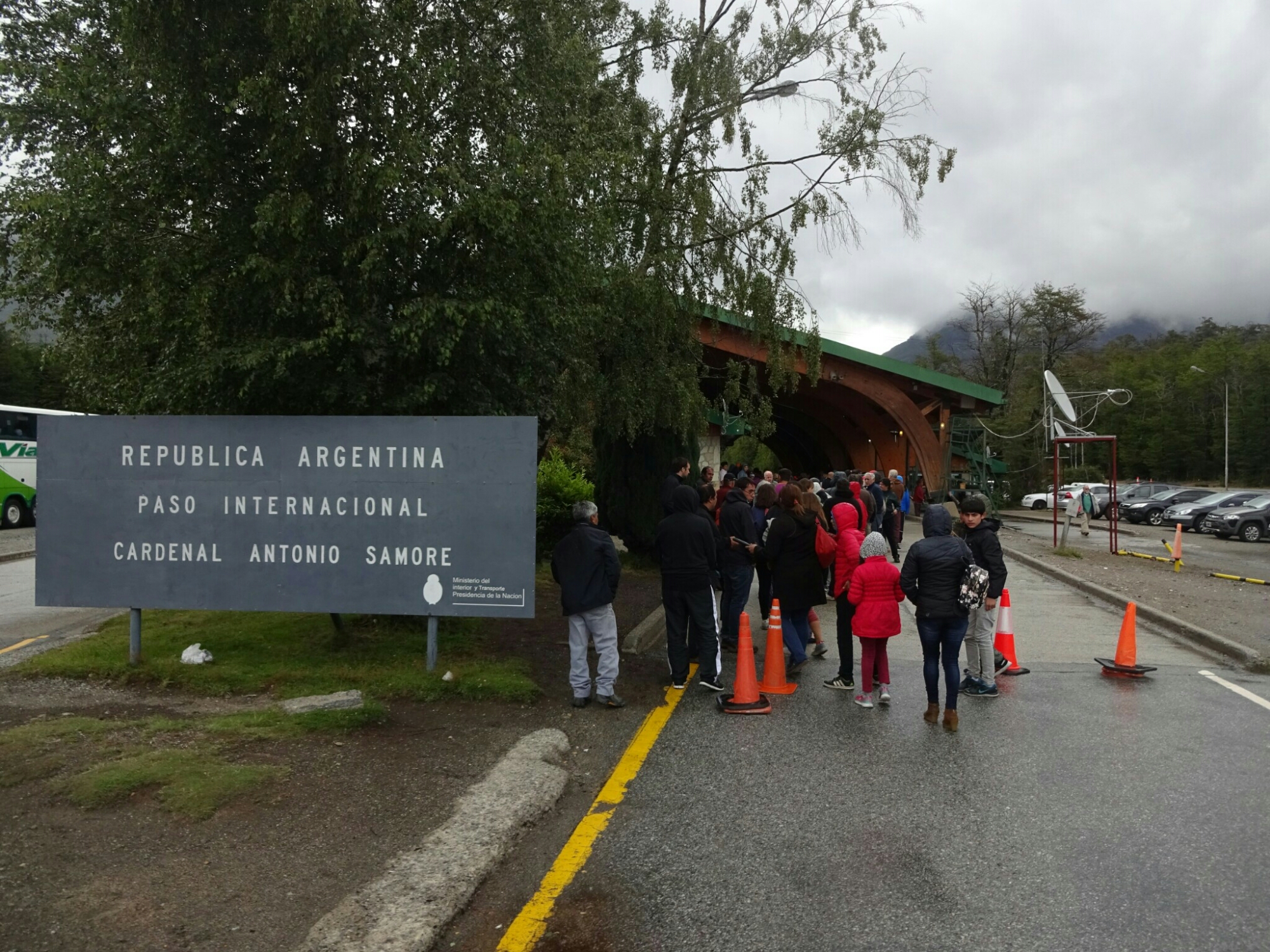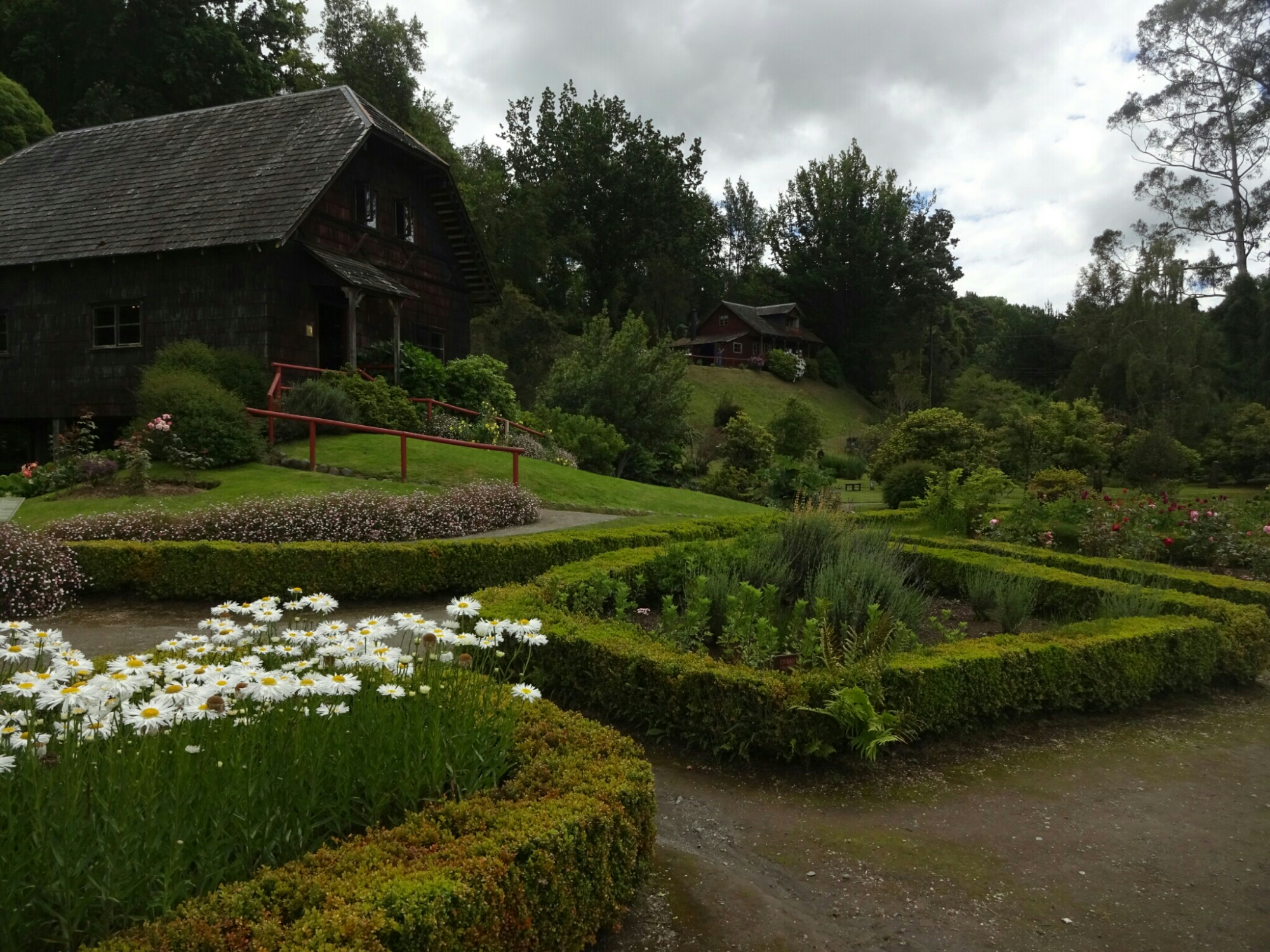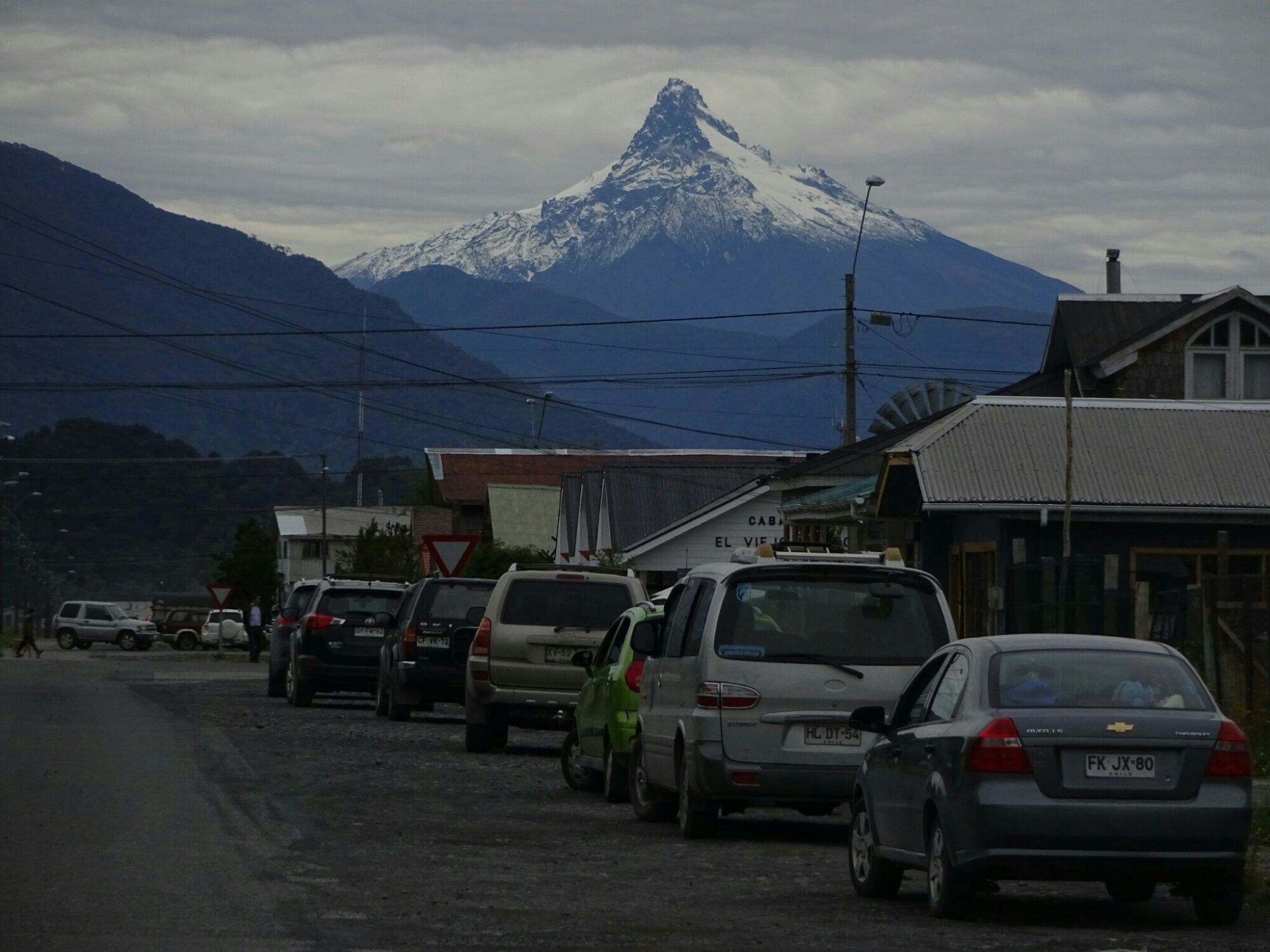But camels don’t live in South America!? That’s true, but everything is possible in Chile, a country which is more far than wide. To get to Chile I just needed to cross the border, which is not far from Bariloche. I wanted to do more hitchhiking, so I was prepared for a full day on the road, even if Puerto Varas, my first destination in Chile, was only 300 km away. The first problem was getting out of Argentina, which involved a lot of waiting in line for few stamps in the passport and from customs.

Then there was the barrier of the Andes, but there is a fairly good road which leads across one of the lower mountain passes. And, guess what? The same procedure of lining up for stamps was necessary to enter Chile. And an additional stamp was necessary, because you need to declare all food you’re bringing into the country. By now it was getting late and the race against the fading daylight had begun. Thanks to two nice bus drivers – both taking me for free – I managed to get to my hostel by nightfall, after more than 11 hours of waiting, lining up and being on the road.


In Puerto Varas I decided to stay another night, before heading to the Isla de Chiloe. I used the extra day for some organizational stuff and to visit my favorite city so far, at least by name: Frutillar. But the whole city wasn’t only about strawberries (frutillas), it was more about fruits in general and had many places where you could get smoothies, jams and German style fruit pies. The latter one has a lot to do with the German heritage of the area, as about 30000 Germans settled here during the mid 19th century.


The German heritage can be experienced in the German colonial museum of Frutillar, which has several buildings of that time on display, including a water mill, a round shed, a blacksmith’s workplace and house, as well as a wealthy farm house. It’s all nicely furnished, with good explanations in Spanish, English and German. And without clouds you’d have an excellent view over the Llanquihue Lake and the volcanos around it.


My next destination would be Isla de Chiloe. On a map I had seen a nice road, the carreterra austral, which leads along the coastline as part of the carreterra autral, taking several ferries to get to Chaiten. From there you can take another ferry to the island. Early the next morning I went to Puerto Montt, where my camel to Chaiten was leaving from – the kemelbus! And I should have known better than to take a camel into territory, which it is unfamiliar with.


But the ride itself was very nice and scenic, as it leads through fjord-like valleys of the chilenian coastline. The weather was nice and I could enjoy the sunshine on deck of the long ferry ride while watching rocky and sometimes even snow-capped mountains passing by. In the evening we had reached Chaiten, which is not to be confused with El Chalten, a town in southern Argentina. An Asian couple was very disappointed when the bus stopped and I told them that their desired destination was still more than 1000 km away.

I was quite happy with today’s destination, as I had reached my goal. However, I was a bit disappointed to find out that the only ferry service from Chaiten to the Isla de Chiloe is Tuesdays and Saturdays. This shortened my time on the island to about one day before heading back to Puerto Montt for my flight to Punta Arenas. Maybe it was meant to be, as I had to catch up with some sleep. And as I had no expectations of this place, I was wondering if it had anything to offer for two days and a forecast of rain.

